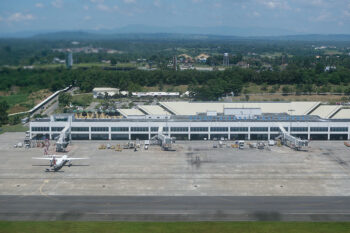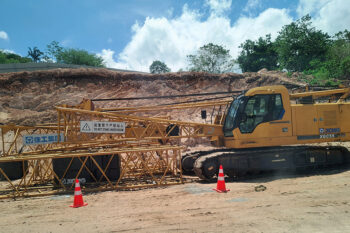GENERAL SANTOS CITY (MindaNews/1 May) – In 1989, more than 20,000 workers and public sector employees marched through the narrow streets of Davao City demanding for a Php25 legislated wage increase.
The marchers were a merry mix of leftists, moderates and rightists. But the loudest color was that of the leftist Kilusang Mayo Uno (KMU), then the dominant labor center in Mindanao. KMU earlier spearheaded an island-wide general strike which paralyzed transport and commerce in most of Mindanao’s key cities in solidarity with workers throughout the country who had been demanding for a wage increase for all workers nationwide.
The newly restored Philippine Congress thereafter passed a law granting a P25 across the board pay hike. It was however the last of its kind since the fall of the Marcos dictatorship.
In the same year, the Herrera Law (Republic Act 6715) was also enacted which amended the Labor Code of the Philippines. Among its major provisions is the “rationalization” of wage increases, leaving the determination of the minimum pay scale to the Regional Tripartite Wage and Productivity Board created under Republic Act 6727.
It also granted the labor secretary broad powers to assume jurisdiction over labor disputes in the name of national security and public interest, a carryover of the draconian Marcos era- Presidential Decree No. 442 (old Labor Code). Moreover, the Herrera Law, while prohibiting labor only contracting, provided legal covers how employers can resort to labor contracting.
Today, most manufacturing and services companies have almost exclusively contract employees and workers.
More than two decades of RA 6715, too, the number of organized workers nationwide dropped from a high of 2.97 million unionized workers before the law was passed, it was down to mere 555,000 in 2004 which further dropped to 319,408 in 2010. The 2010 number of organized workers was a pathetic 10.6 per cent of the total 3,020,168 wage earners in the country at that time and less than one percent of the country’s 2009 labor force of 39.39 million (www.bulatlat.com).
In addition, the real value of wages has “stagnated” if not contracted. According to the Ecumenical Institute Education and Research, wage index dropped from Php128.5 in 1989 to Php112.9 in 2009. In other words, workers lost Php15.60 in real value of their daily wage in 20 years of the Herrera Law.
Research and think-thank group IBON today said the “current NCR minimum wage of Php426 is grossly insufficient to provide for even a small family.
“The largest part of this wage breaks down into just approximately: Php204 per day for food; Php2,096 per month for rent; Php1,150 per month for fuel, light and water; Php28 per day (or Php843 per month) for transportation. These account for some 80 percent of total spending with the balance going to personal care, clothing and footwear, education, medical care and others.
“This indicates the poor quality of life that minimum wage earners in Metro Manila can afford. IBON added that this contrasts with, for example, the amount spent by the richest 10 percent of families in NCR who average Php18,041 per month just on food.”
Against this backdrop, trade union centers in the country today have largely become nominal “spokes-entity” rather than the formidable labor voice they once were immediately after the ouster of the Marcos dictatorship.
The Kilusang Mayo Uno, which challenged government trade union centers backed and later seized dominance in the post EDSA labor movement, has seen its clout greatly reduced and is now back to where it was during the dark years of martial law.
Its main organizational and ideological rival, the AFL-CIO backed Trade Union Congress of the Philippines, did not escape the decapitating effects of the Herrera Law, ironically authored by one of its leading stalwarts, former Sen. Ernesto Herrera.
In the late ’80s, when KMU had more than 600,000 unionized members and tens of thousands more under its effective influence, it became bold enough to challenge the government to allow workers to organize along trades. The proposal, while never translated in a proposed law, was flatly rejected by employers and its rival, mindful of the growing influence of the militant labor group in the labor movement.
Today, however, KMU, TUCP and the unions affiliated with the World Free Trade Unions can only regret why they did not organize along trades, for together with the rapid and steadily decline of the number of organized workers, strikes have also dramatically dropped if not disappeared altogether. Newly registered unions dipped from 627 to just 279 in 2008. From 197 strikes in 1989, these hit almost rock bottom to just 4 in 2009.
With close to 8 percent of the country’s 39,200,000 (2011 figure) work force out of jobs and competing for whatever available job there is in the market, trade unionism will have to take the backseat in favor of day-to-day survival as if the existing laws and conditions are not deterrent enough for trade unionism to again spring back to life.
But as its history will suggest, trade unionism, at least the more militant and progressive side of it, rises and falls along with the crisis political economy of the Philippines. (Edwin G. Espejo writes for www.asiancorrespondent.com.)







